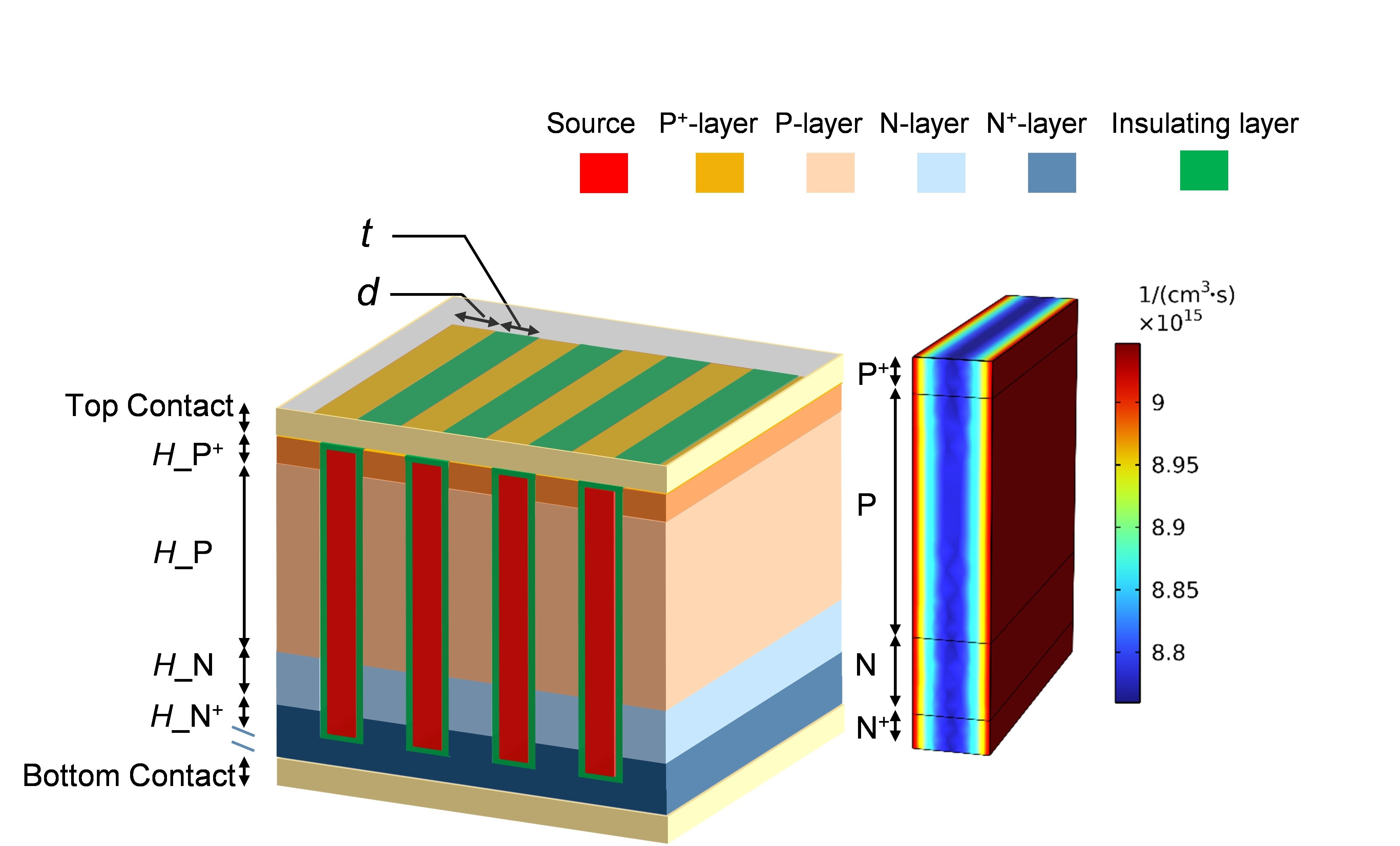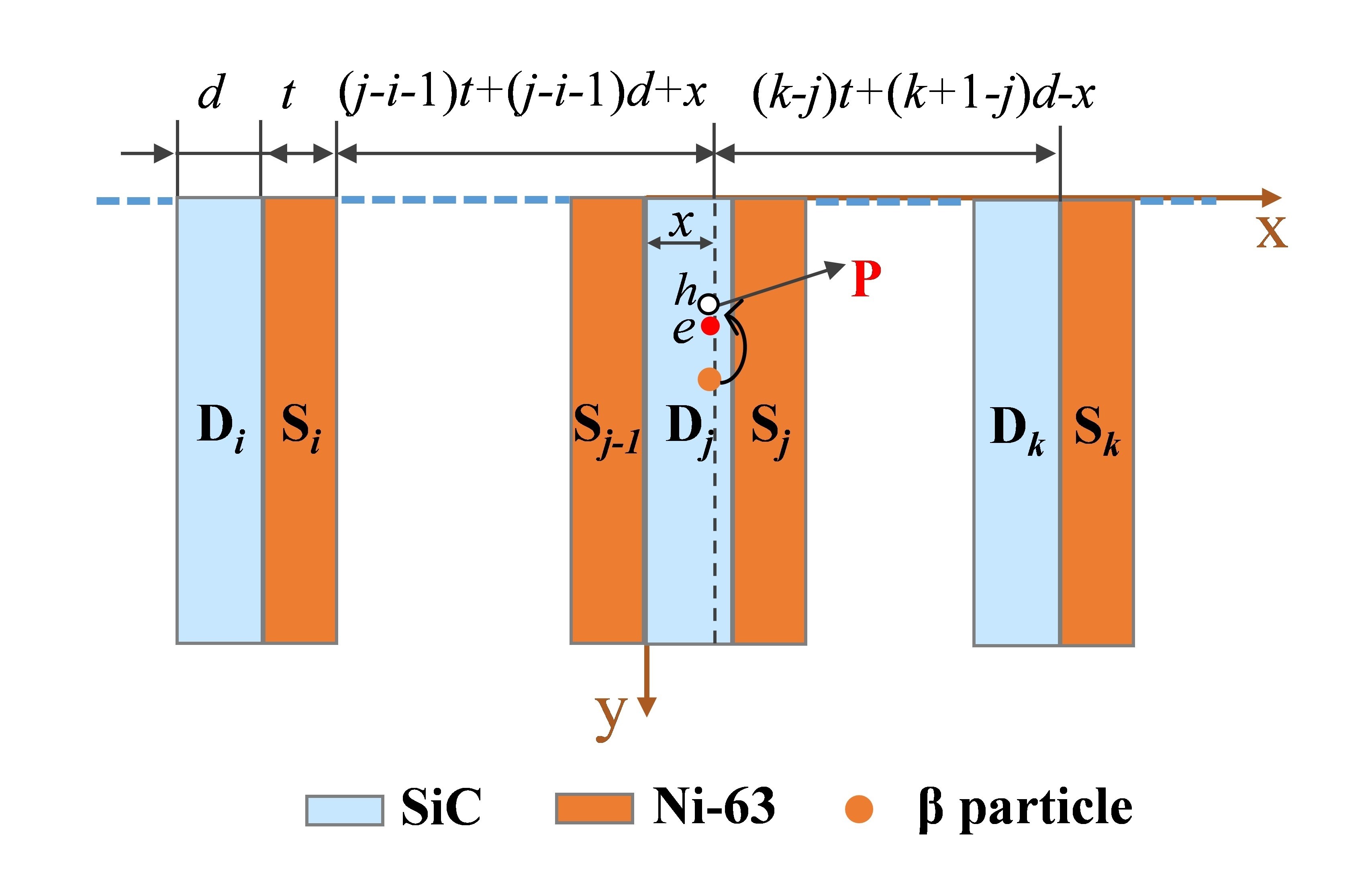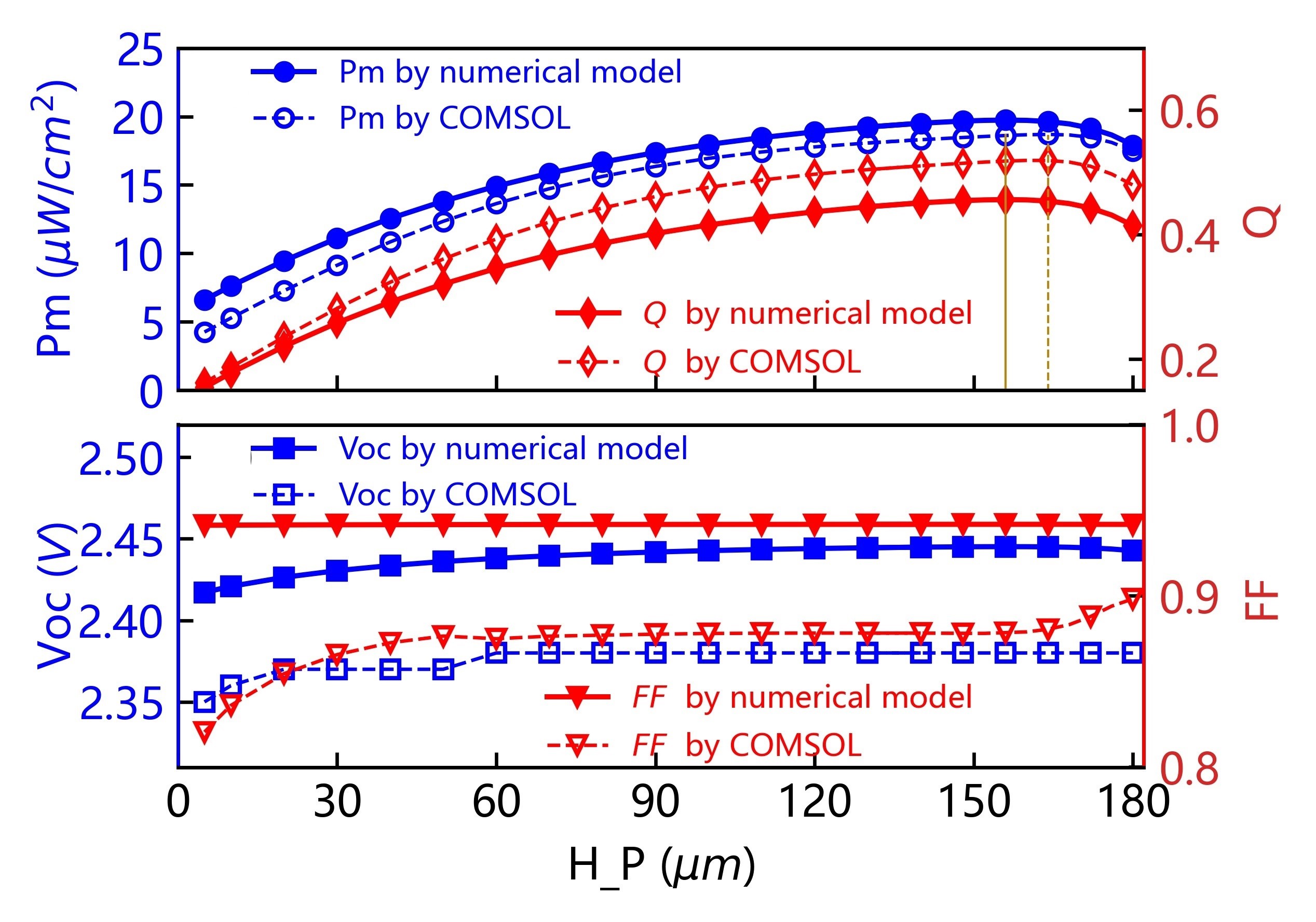
Recently, a research group led by Associate Professor Han Yuncheng from Hefei Institutes of Physical Science (HFIPS), Chinese Academy of Sciences, developed a novel 3D 63Ni-SiC-based betavoltaic nuclear battery with high-output power.
The results were published in Nuclear Science and Techniques.
Betavoltaic nuclear batteries, known for their extended lifespan, high energy density, compact size, and resilience to interference, are considered a promising energy source for Micro-Electro-Mechanical Systems (MEMS). However, the planar configuration of conventional batteries limits the utilization of the radioisotope source due to its utilizing decay energy emitted from only one side of the radioisotope source, leading to limited output power, typically at the nanowatt level, failing to meet the power requirements of MEMS systems (~microwatt).
To overcome these limitations, the researchers proposed a novel three-dimensional (3D) battery design based on 63Ni-SiC material, employing a P+PNN+ multi-groove structure. This design innovation eliminates the requirement for epitaxial PN junctions within the semiconductor device grooves, reducing power loss due to leakage current. By employing advanced Monte Carlo simulation methods and fully coupled physical models, the team successfully extended the electron-hole pair generation rate (G(x)) to the 3D structure, enabling efficient design and development of betavoltaic batteries with complex 3D structures.
The results demonstrate superior performance of the newly proposed 3D battery over conventional planar batteries in terms of maximum output power density, achieving about 20 μW/cm2. Furthermore, in-depth analyses of carrier transport and collection characteristics using COMSOL Multiphysics elucidated the power enhancement mechanism of betavoltaic batteries and revealed discrepancies between ideal and simulated performances.
This study offers novel insights for designing and optimizing high-output betavoltaic nuclear batteries, according to the team.

Fig. 1. Schematic 3D diagram showing part of the proposed battery and the distribution of the electron–hole pair generation rate in the innermost ridge. (Image by HE Houjun)

Fig. 2. The G(x) model for 3D P+PNN+ multi-groove structure. (Image by HE Houjun)

Fig. 3. Performance discrepancies between the ideal and practical performances simulated by COMSOL. (Image by HE Houjun)